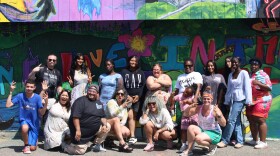On January 16, 1920, Americans took their last legal drink for 13 years. In New York City, gadflies wore black clothes and funeral robes in anticipation of the Volstead Act kicking off Prohibition at midnight. Reporters for the Daily News imagined the last words of John Barleycorn: “I’ve had more friends in private and more foes in public than any other man in America.”
America’s relationship with alcohol veers between those two poles: the social and the secret; temperance and intemperance; addiction and recovery. Susan Cheever follows those cycles in a new book called Drinking in America: Our Secret History.

From the Pilgrims landing on Plymouth Rock because they ran out of beer, to inebriated Revolutionary and Civil War soldiers, to writers, like her father, John Cheever, who created a romantic mythology around creativity, success, and alcohol, Americans have always had a way with the bottle.
As Cheever explains about America:
We have the most passionate ambivalence about drinking of any nation in the world and it’s really shaped who we are, and continues to shape who we are.
Contaminated water sources in cities made alcohol a safer option than water for many early Americans – even children drank a concoction called “flip” (a mixture of juice and grain alcohol) before going to school in the morning. But despite the historical precedence for heavy drinking, Cheever points out that America’s particular stance of alcohol is unique:
Other nations drink more, other nations drink less, but no other nation is one of the drunkest countries in the world and then one hundred years later outlaws it.

...when I looked carefully at the link between American writers and alcoholism, it wasn't there...In the 19th century, there was no connection between American literature and American writers and drinking.
This complex relationship with alcohol is most romanticized by the image of the American writer, slumped over a type writer with a glass of whiskey in hand (gin for Fitzgerald). But actually, Cheever says, that's more myth than reality.
…when I looked carefully at the link between American writers and alcoholism, it wasn’t there…In the 19th century, there was no connection between American literature and American writers and drinking.
Nineteenth century authors like Melville, Hawthorne, and Dickenson were not as notorious for loving the bottle as later generations of writers. Cheever points out that only one American author from the time before Prohibition was known to imbibe: Edgar Allan Poe (whose mysterious death is sometimes attributed to alcohol withdrawal – other theories include beating, cooping, and even rabies).
And then Prohibition came along, and for two generations we had writers who drank. You know, famously five of the writers who won the Noble Prize for Literature were alcoholics. And now – it’s over.

Cheever calls it a “two generation aberration” that has become iconic in the minds of American readers. Writers like Fitzgerald and Hemingway popularized the image of the heavy-drinking American author and the picture has stuck ever since.
Her father, the Pulitzer-prize winner author John Cheever, was touted as the “Chekhov of the Suburbs,” and is often listed as one of the best American authors.
He was also an alcoholic and closeted homosexual, two facts that have mythologized him in the eyes of biographers. Susan Cheever reminds readers that behind the legend of all great American writers are real people, not metaphors.
The dreadful parts of alcoholism fall on the innocent, as well as on the drinker.
So how did writers become so tangled with alcohol?
…writers are also defiant. And they’re outsiders – the writer’s an outsider.
Cheever thinks it's probably all that weirdness bottled up inside, waiting for something to rail against. And for two generations of American writers, Prohibition was a perfect target.
Web Extra: Susan Cheever talks to Virginia about the myth of the drunk writer, and how alcoholism is unique in the way it affects people's lives.







